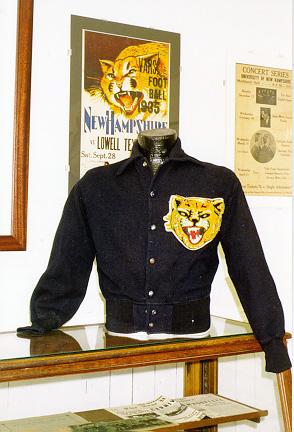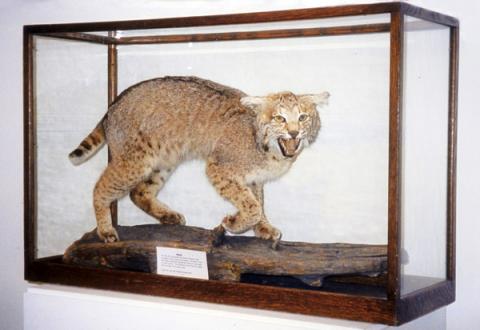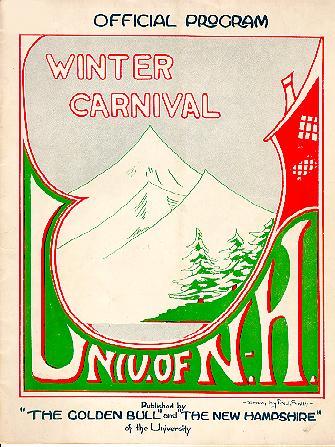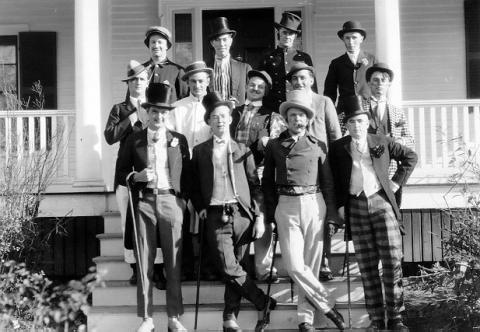
Bulls, Wildcats and Mayors: Early UNH Football, Winter Sports and Social Traditions
October 1 - December 30, 1998
Dale Valena, Museum Curator
Men's and women's sports at UNH have early roots, beginning with football, basketball, track, ice hockey, and winter sports for men, and basketball, gymnastics, field hockey, and soccer for women. Early, too, were the social traditions that accompanied these sports, particularly football.
Fight songs, bonfires, rallies, mayorality campaigns, banquets, proms, and half-time band performances are some of the events that have evolved around football, a sport that has had a long tradition of bringing students, alumni, and the community together in the name of team spirit.
The exhibit was a collaborative effort between the University Museum, the University Archives, and the 1998 spring semester University Honors Program Seminar in the History of Sport taught by Professor Steve Hardy in the Department of Kinesiology. The museum blended much of the students' research about UNH teams with its sports memorabilia collection to create an entertaining display. Given the limited exhibit space, this display could only scratch the surface of UNH sports history.

On loan from the Athletic Dept.
The First Wildcat
Maizie was the first of a long series of mascots. She made her debut at the homecoming game in the fall of 1927. Hers was a brief and melancholy history for she died after a few months. The student council had her stuffed and mounted in this glass case.
The Wildcat Mascot
The wildcat was voted in as the official college mascot in February, 1926. The Durham Bulls (a named given to the varsity hockey team by the media) was a close runner up, but the Wildcat won it in the final count. Before the election, the N. H. Club went on record in The New Hampshire as favoring the wildcat for these reasons:
The Wildcat is small and aggressive -- like New Hampshire. The actions of the wildcat are more symbolic of a New Hampshire team on the field than those of the sluggish bull. Furthermore, the actual mascot, if a wildcat, could be more easily transported from place to place than a bull.

Winter Carnival
The first Winter Carnival, held in 1922, was sponsored by the Forestry Club and featured ski jumping competitions held on Garrison Hill (where the Oyster River Middle School now resides). By 1924 the Outing Club sponsored the carnival complete with winter sports team ski jumping on Beech Hill (in Madbury), snow-related games, and a carnival ball.
In 1922 Gunnar Michelson led the winter sports team to the Lake Placid Winter Carnival and won five medals. In 1924 the team began competing in winter carnivals at other colleges such as Dartmouth, University of Vermont, and Williams College.
Mayor of Durham
Campaigns for Mayor of Durham began in 1926 and continued well into the 1960s. Candidates, usually sponsored by fraternities and dorms, campaigned by making speeches and distributing posters. The students voted under the arch at Thompson Hall and the victor paraded as master of ceremonies during the homecoming football game. The president of the college often gave a symbolic key to the town to the "Mayor," who responded with outrageous promises to the cheering student body.

Mayorality Campaign, Group of Candidates and Their Managers, 1930
Photo by Clement Moran
See this photo in Digital Collections